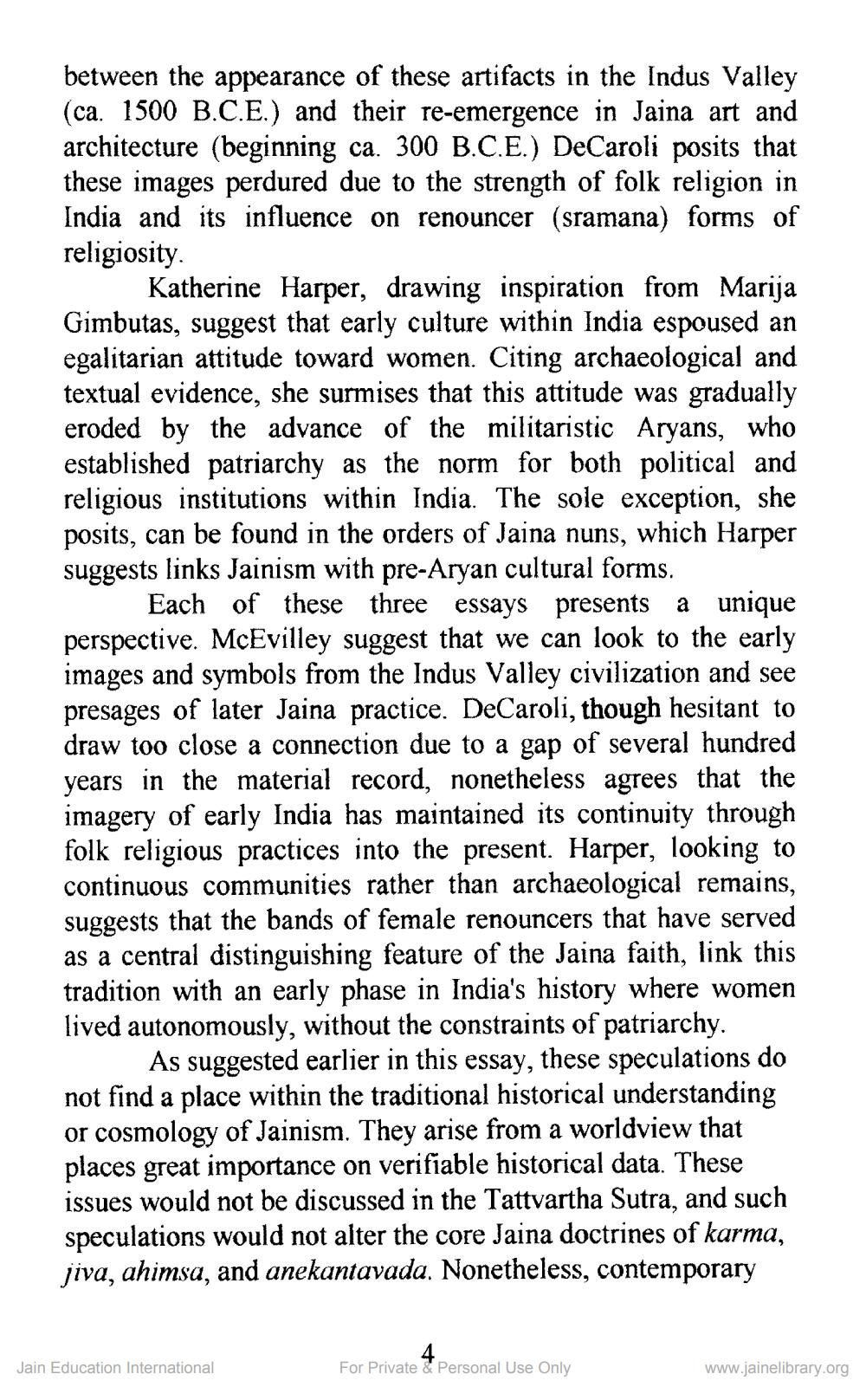________________
between the appearance of these artifacts in the Indus Valley (ca. 1500 B.C.E.) and their re-emergence in Jaina art and architecture (beginning ca. 300 B.C.E.) DeCaroli posits that these images perdured due to the strength of folk religion in India and its influence on renouncer (sramana) forms of religiosity.
Katherine Harper, drawing inspiration from Marija Gimbutas, suggest that early culture within India espoused an egalitarian attitude toward women. Citing archaeological and textual evidence, she surmises that this attitude was gradually eroded by the advance of the militaristic Aryans, who established patriarchy as the norm for both political and religious institutions within India. The sole exception, she posits, can be found in the orders of Jaina nuns, which Harper suggests links Jainism with pre-Aryan cultural forms.
Each of these three essays presents a unique perspective. McEvilley suggest that we can look to the early images and symbols from the Indus Valley civilization and see presages of later Jaina practice. DeCaroli, though hesitant to draw too close a connection due to a gap of several hundred years in the material record, nonetheless agrees that the imagery of early India has maintained its continuity through folk religious practices into the present. Harper, looking to continuous communities rather than archaeological remains, suggests that the bands of female renouncers that have served as a central distinguishing feature of the Jaina faith, link this tradition with an early phase in India's history where women lived autonomously, without the constraints of patriarchy.
As suggested earlier in this essay, these speculations do not find a place within the traditional historical understanding or cosmology of Jainism. They arise from a worldview that places great importance on verifiable historical data. These issues would not be discussed in the Tattvartha Sutra, and such speculations would not alter the core Jaina doctrines of karma, jiva, ahimsa, and anekantavada. Nonetheless, contemporary
Jain Education International
For Private & Personal Use Only
www.jainelibrary.org




